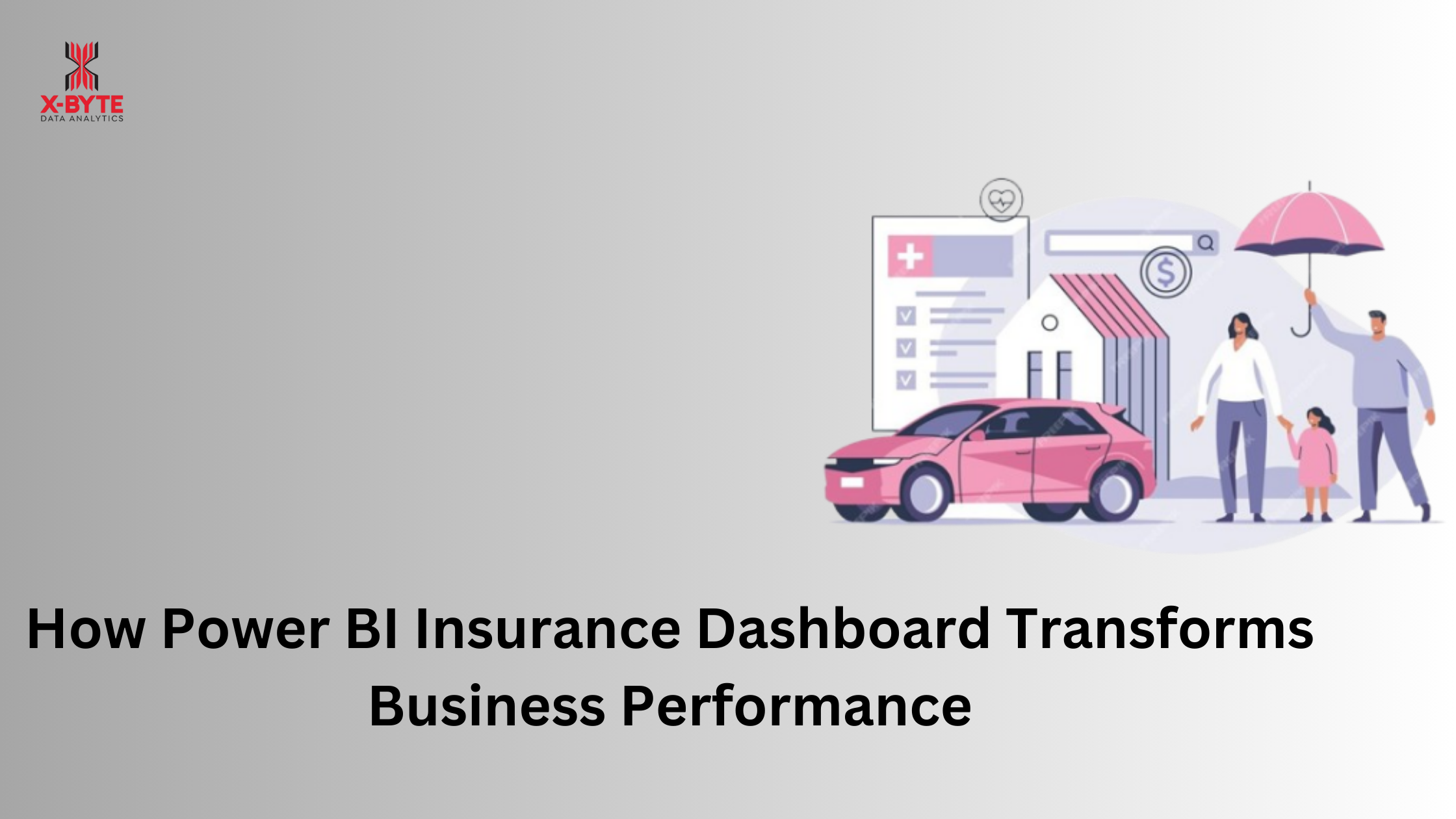Table of Contents
ToggleIntroduction
In today’s fast-evolving insurance industry, data has become a critical asset. With the immense amount of data generated daily, insurance companies face the challenge of making sense of it all to drive business decisions. This is where real-time insurance data analytics becomes invaluable. By leveraging advanced tools like the Power BI Insurance Dashboard, insurers can extract meaningful insights from data and use it to transform their business performance. This blog will explore how real-time data analytics is changing the insurance landscape and the role of Power BI in driving operational efficiency and growth.
The Role of Real-Time Insurance Data Analytics in the Industry
Insurance companies rely heavily on data for various processes, such as underwriting, claims management, risk assessment, and customer service. However, traditional data analysis methods are often slow and reactive, leaving businesses lagging behind when it comes to making timely decisions. Real-time insurance data analytics service offers insurers the ability to monitor, track, and analyze data as it is generated, allowing for quicker responses to emerging trends, customer needs, and potential risks.
This real-time insight empowers insurance firms to identify patterns, forecast trends, and implement strategies that improve overall business performance. By using real-time data analytics, companies can make more informed decisions that increase operational efficiency, reduce costs, and enhance customer satisfaction.
How Power BI Insurance Dashboard Enhances Data Analytics
The Power BI Insurance Dashboard takes real-time data analytics to the next level. With its robust data visualization capabilities, it provides insurance companies with a comprehensive view of their operations, offering actionable insights across all departments. The dashboard integrates with existing data sources and delivers real-time updates on key performance indicators (KPIs) like claims, customer satisfaction, underwriting performance, and financial health.
Insurance companies can customize the Power BI Insurance Dashboard to monitor specific metrics, allowing them to track performance in real-time and make informed decisions based on up-to-date information. For example, by visualizing claims data in real time, insurers can identify delays, assess claim volumes, and streamline processes to ensure quicker settlements.
Real-Time Decision-Making for Better Risk Assessment
Risk assessment is a critical part of the insurance business. Traditionally, insurers have relied on historical data and manual processes to evaluate risk. However, with the rise of real-time insurance data analytics service, companies can now assess risk based on current data and adjust their strategies accordingly.
The Power BI Insurance Dashboard allows insurers to monitor risk factors as they evolve. By analyzing data such as policyholder behavior, market trends, and claim history in real-time, insurers can better understand the risks they face. This enables them to take proactive steps in risk management, such as adjusting underwriting policies or pricing strategies to mitigate potential losses.
Improving Customer Service and Satisfaction
In addition to streamlining operations and enhancing risk assessment, real-time data analytics also plays a pivotal role in improving customer service. With the Power BI Insurance Dashboard, insurers can gain insights into customer interactions, identify pain points, and take action to enhance the customer experience.
For instance, insurers can monitor customer feedback and satisfaction levels in real-time, allowing them to respond quickly to issues and provide better support. Additionally, real-time analysis of customer data helps companies develop personalized offers, adjust coverage options, and improve claims processing times, all of which contribute to higher customer satisfaction.
Driving Business Growth and Competitive Advantage
The use of real-time insurance data analytics with tools like the Power BI Insurance Dashboard gives insurance companies a competitive edge. By providing real-time visibility into key metrics, insurers can optimize their operations, make smarter business decisions, and stay ahead of industry trends.
For insurance firms looking to scale their operations, the ability to make data-driven decisions in real-time leads to better performance, increased profitability, and stronger customer relationships. Furthermore, by streamlining processes such as claims management and risk assessment, insurers can reduce operational costs, enhance efficiency, and position themselves as industry leaders.
Conclusion
The integration of real-time data analytics into the insurance sector has revolutionized how companies approach decision-making, risk assessment, and customer service. The Power BI Insurance Dashboard is at the forefront of this transformation, providing insurers with the tools they need to visualize and analyze data in real-time, make informed decisions, and drive business success.
As the insurance landscape continues to evolve, adopting real-time insurance data analytics service will become increasingly important for businesses that want to remain competitive and responsive to market demands. By embracing advanced tools like Power BI, insurers can unlock the full potential of their data and transform their business performance for the better.









